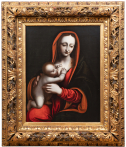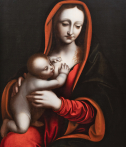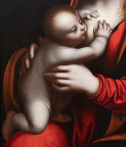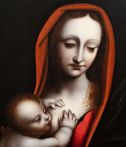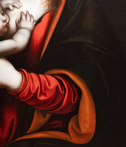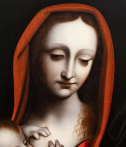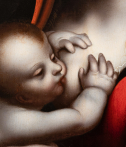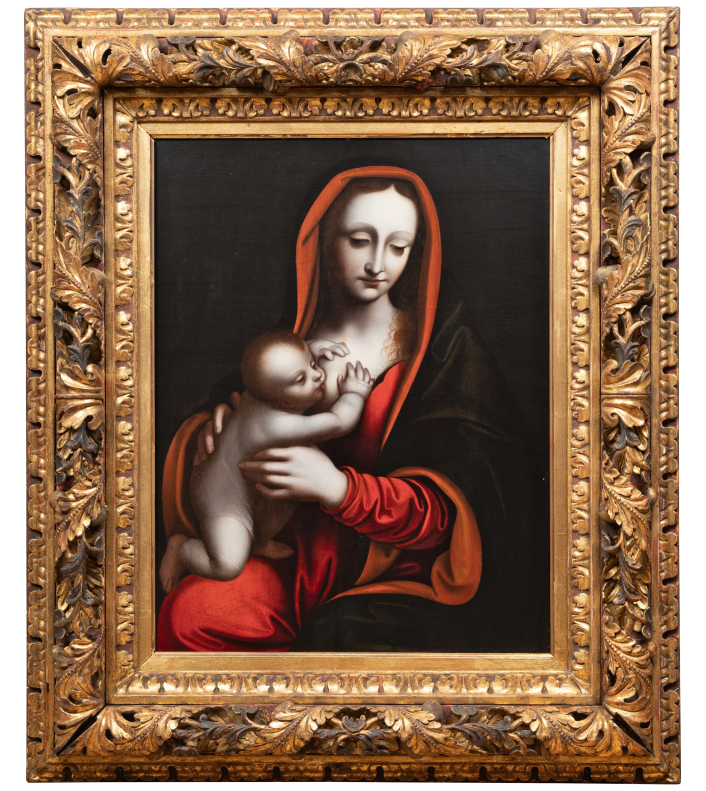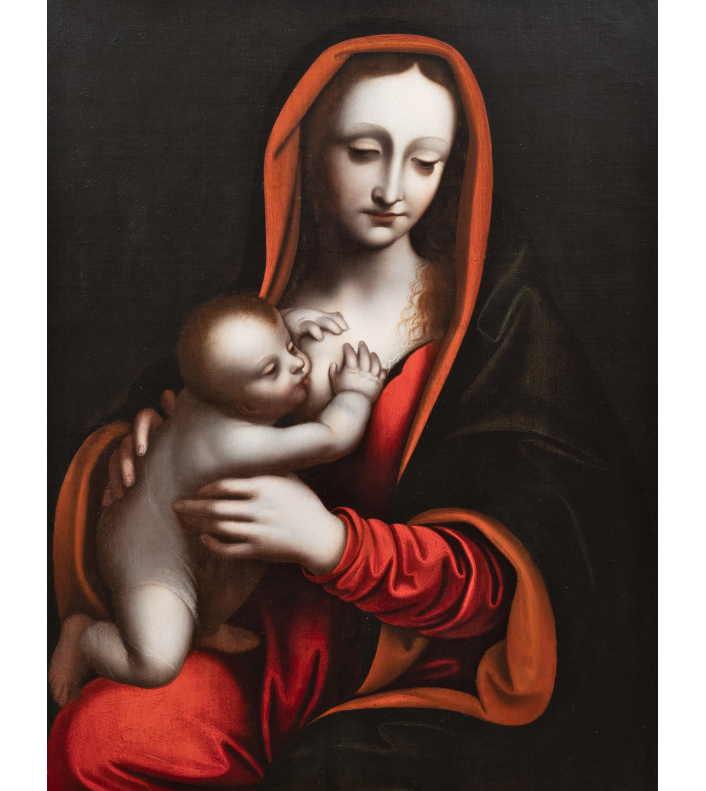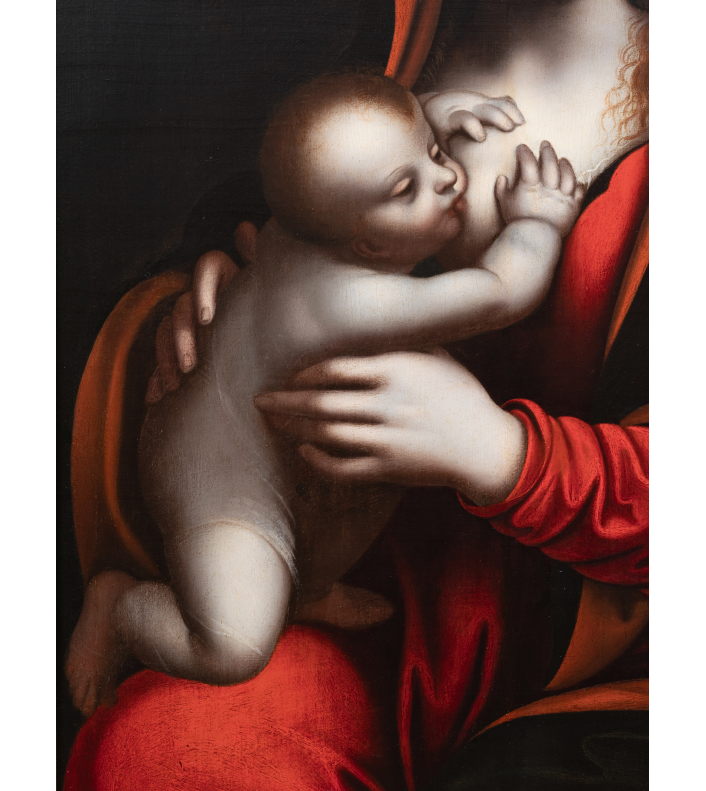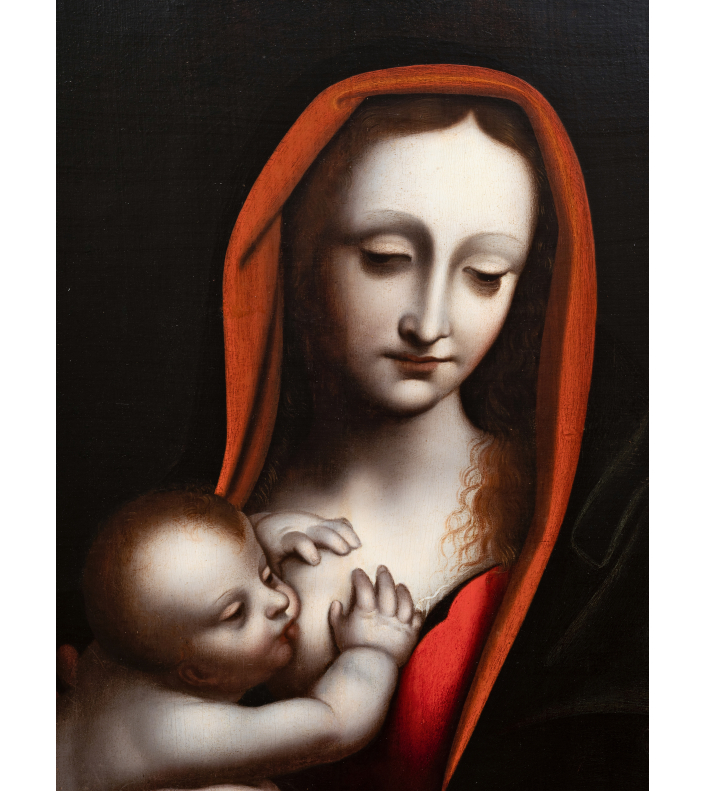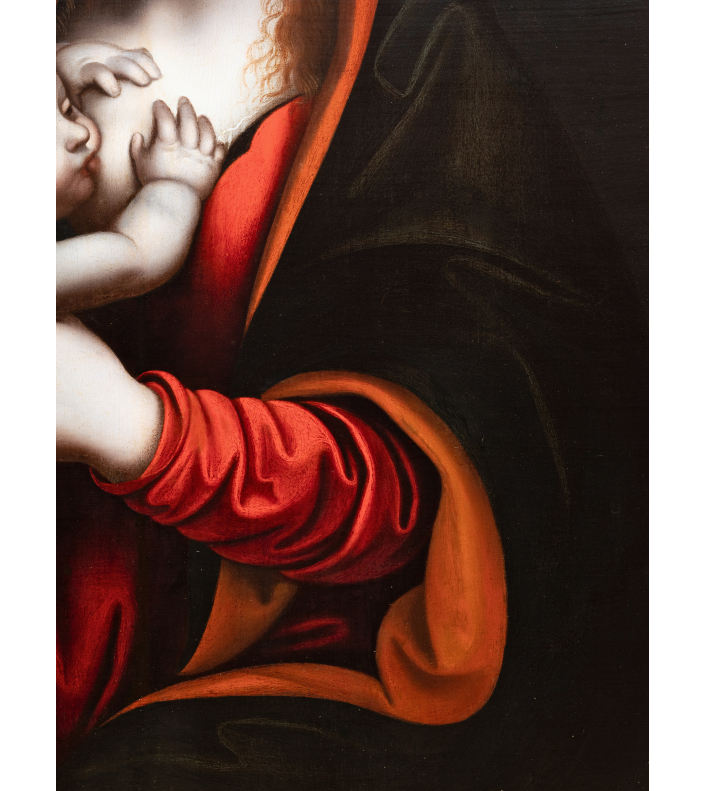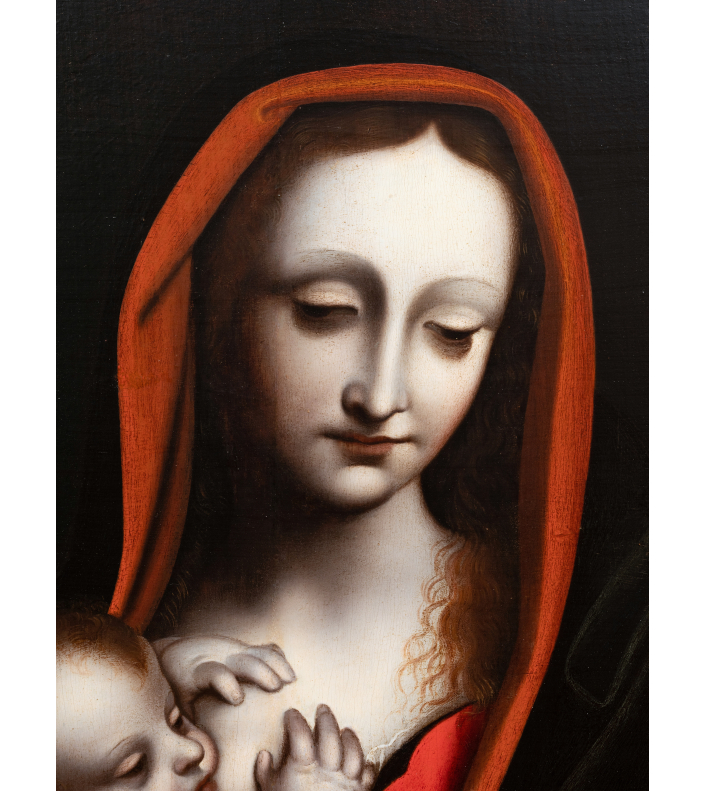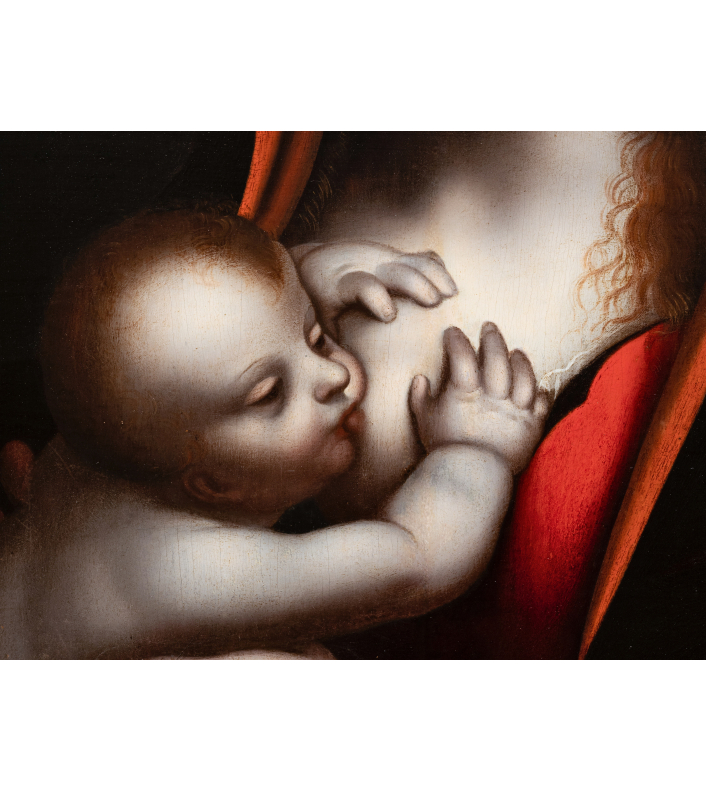Virgin with Child, studio of Giampietrino (1495-1550), 16th century Milanese school
23 000 € €Virgin with Child,
studio of Giovanni Pietro Rizzoli, known as Giampietrino (active Milan 1495-1550)
Oil on poplar panel, h. 63 cm, w. 49 cm
Important 17th century Italian frame in gilded and painted wood, richly carved with foliage.
Framed: h. 94 cm, w. 79 cm
Our panel depicts the Virgin and Jesus in a moving and intimate setting, the chiaroscuro accentuating a mystical atmosphere of this act of breastfeeding that forms a bond between mother and child.
The face of the Virgin, with its Leonardo-esque type, is dominated by a high forehead, stretched eyes with heavy lowered eyelids, and a long nose. Her features are modeled using the sfumato technique, the subtle transitions from shadow to light, blurring the outline of her right cheek and accentuating the dark areas under the eyes. Under this effect, the illuminated complexions seem illuminated by an inner radiance.
Her loose hair separated by a center part, the carefully drawn curly locks emerge from the darkness and fall on either side onto her shoulders.
The Virgin wears a bright red dress, topped by a blue cloak darkened by time, lined with an intense orange that frames her face and adds a touch of color to the lower right of the painting, around her sleeve. The vibrant colors and illuminated pulpits contrast with the dark background.
Jesus stands on the Virgin's knee, partially covered by a transparent veil, he presses his face against his mother's uncovered breast, which he holds with both hands to suckle.
Mary's grave and solemn posture affects this nurturing act full of love and gentleness and prefigures the future sacrifice of Christ to save all humanity from sin.
Our moving painting is a workshop variation after the autograph work by Giovanni Pietro Rizzoli, known as Giampietrino, painted in the 1520s and held in a private collection. He is known to be one of Leonardo da Vinci's most talented disciples in Milano.
Several replicas have been listed by art historians, differing from the original version in the complete nudity of Jesus or, on the contrary, in the presence of a sheet that partially envelops him. On the other hand, in our painting, the artist's pupil faithfully reproduces the same transparent veil that is found on the original.
Giampietrino's autograph work:
• Oil on panel, 66.5 cm x 51.7 cm, Christie's, 2/07/2024, lot no. 12
Related works:
• After Giampietrino, 16th century, oil on canvas 56 cm x 46 cm, Musée des Beaux-Arts de Dijon, inv. Ca 735 (the naked child)
• Paris, Hotel Georges V, 18/12/2002, lot no. 2, attributed to Giampietrino, oil on walnut panel, 67 cm x 52 cm (comment: the dressed child)
• Milan, Galerie Scopinich sale, November 1932, lot no. 39, oil on panel, 66 cm x 51 cm, as a Flemish master of the Milanese school of Leonardo, around 1510, Claudio Gallio collection (the naked child)
• Christies New York sale, 19/04/2007, lot no. 248, oil on panel; 63.5 cm x 50.2 cm, as circle of Andrea Solario (Milan 1465-1524) (comment: the dressed child)
• Nagel sale, Stuttgart, Germany, 30/11/1965, oil on panel, 48 cm x 37 cm, as Milanese school of the 16th century, (comment: the dressed child)
Bibliography: C. Geddo, "The Madonna of Castel Vitoni del Giampietrino", Achademia Leonardi Vinci, VII, 1994, p. 62, note 29 for the identified replicas
The theme of the Virgin breastfeeding the Child Jesus, the Virgo lactans , is one of the oldest and most venerated in Christian iconography. In Italy, this image developed from the second half of the 14th century. In Milan, following in the footsteps of Leonardo da Vinci, several artists sought to find a lively and natural interaction between mother and child, with a tender expression. The model is the Madonna Litta in the Hermitage, a composition probably conceived by Leonardo da Vinci but painted by one of his pupils, probably Marco d'Oggiono, in the early 1490s (attributed to Leonardo da Vinci, Virgin nursing the Child, known as Madonna Litta, circa 1490-92, woodcut transferred to canvas, 42 x 33 cm, St. Petersburg, Hermitage Museum, GE249).
Giovanni Pietro Rizzoli, dit Giampietrino (active Milan 1495-1550)
There are many doubts about Giampietrino's identity, but it seems likely that he was Giovanni Pietro Rizzoli. He could be identified with the "Gianpetro" listed with other names annotated by Leonardo on a leaf of his famous treatise on painting, the Codex Atlanticus. Giovanni Paolo Lomazzo, in his treatise on painting published in 1584, cites a certain "Pietro Rizzo Milanese" among Leonardo's most famous students. In his youth, he may have trained in Leonardo's workshop as early as the mid-1490s. As the young apprentice became a more mature painter, it would have been natural for them to renew their working relationship some ten years later, when Leonardo returned to Milan for the second time between 1508 and 1513. That Giampietrino had access to Leonardo and his materials, drawings, and paintings from which to draw inspiration is attested by the works themselves. Among the Leonardeschi, Giampietrino was one of the most gifted pupils and a major disseminator of the master's style throughout Lombardy, thanks to his abundant, if uneven, output, as he produced many versions of the same work with the participation of the workshop.


